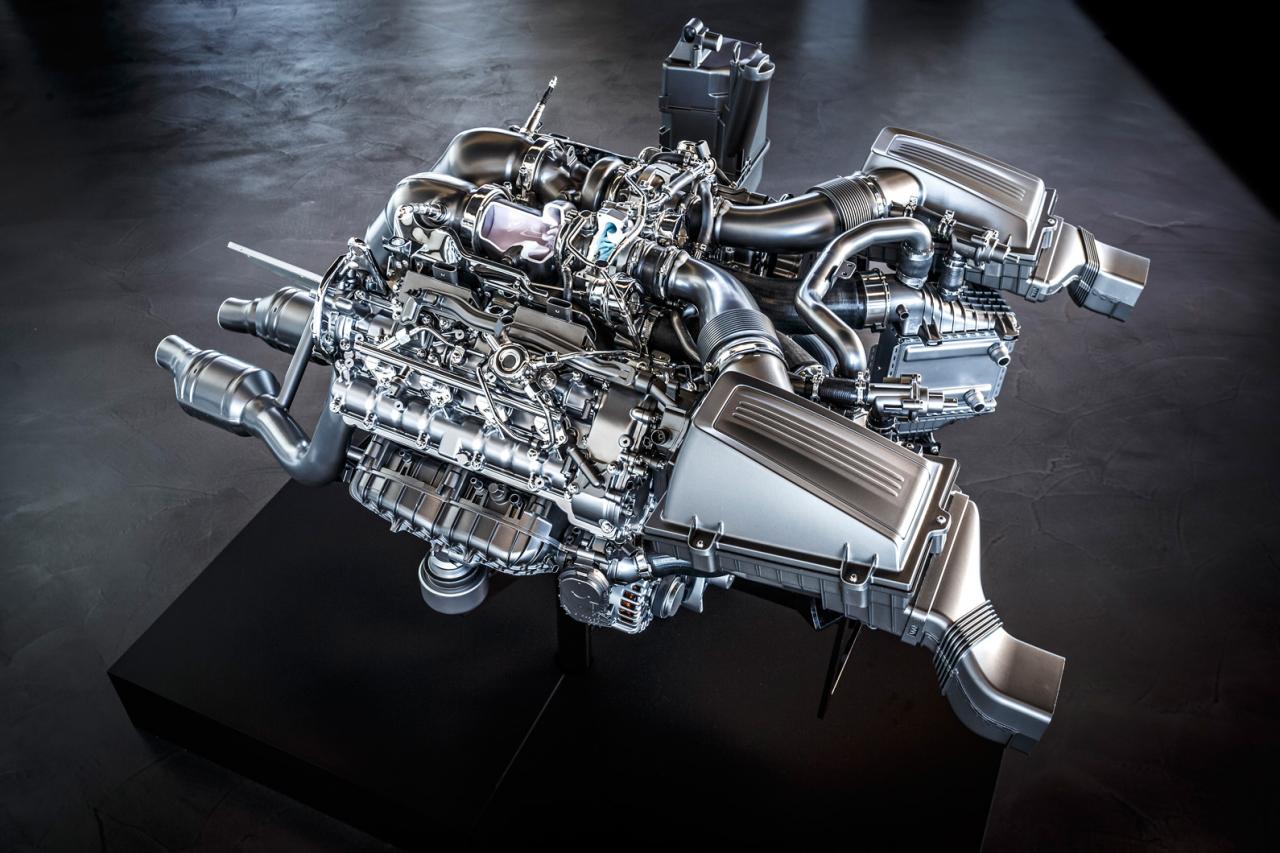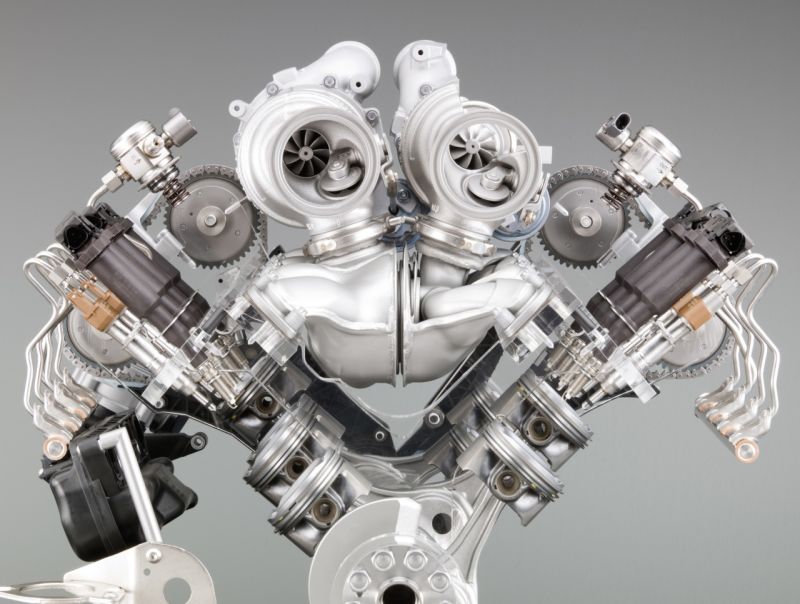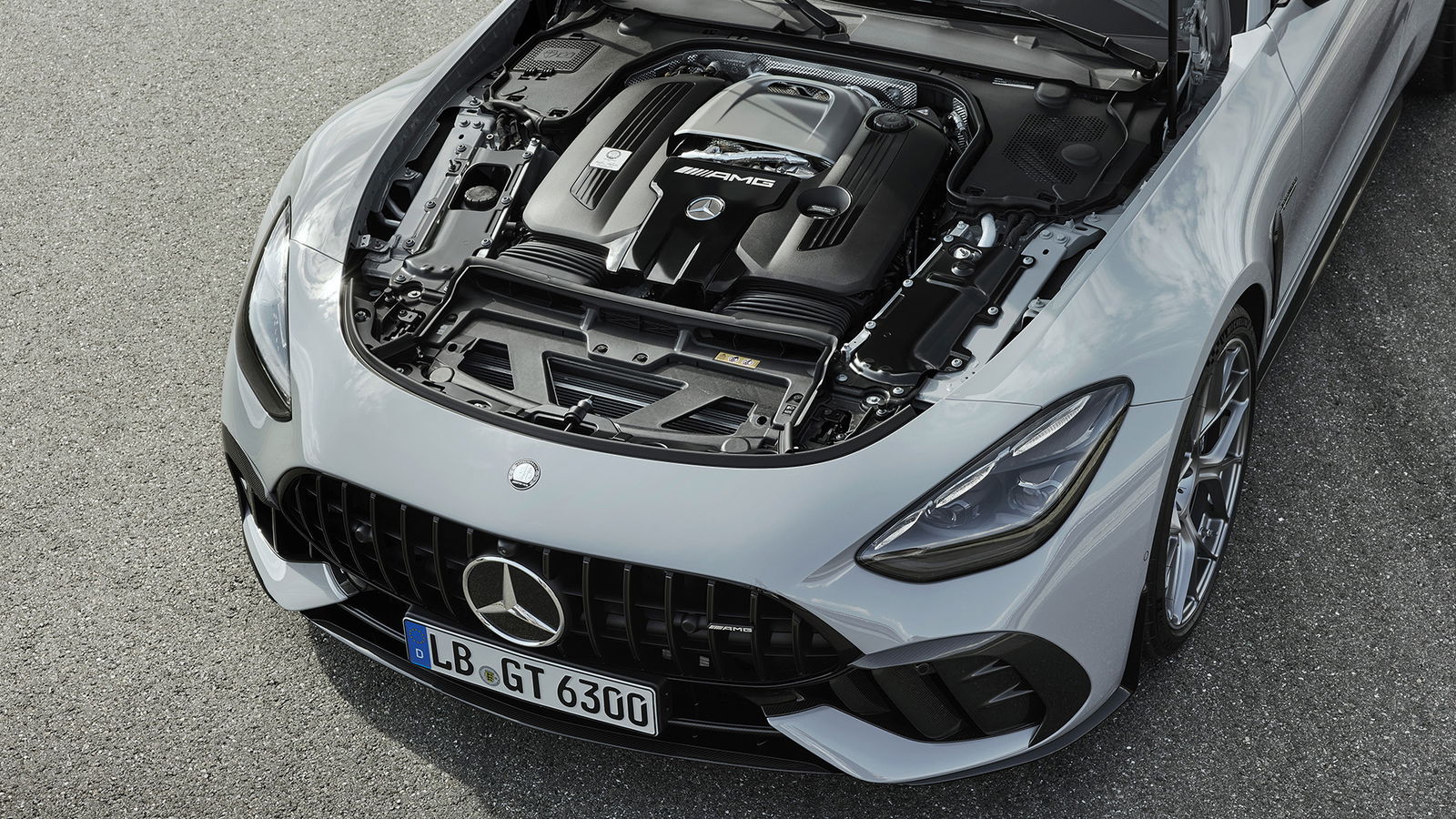What Is A Hot V Turbo Engine, And What Are The Benefits?

On a conventional turbocharged engine, you’d find the turbocharger(s) mounted outside of the cylinder heads and down at the end of an exhaust manifold. Why? Well, it’s easy to do, and it’s a proven method of safely fitting turbochargers. Why fix something that isn’t broken?
Well, it’s not the most efficient way of producing power – which is where the ‘hot V’ comes into play. Born in the world of motorsport, as many things are, it’s becoming an increasingly common method of turbocharging for performance cars. But why, exactly? We explain.
How does a Hot V work?

Conventional engines see air travel through the intake manifold and ports, and then onto the cylinders before waste gases are then fed onwards to the exhaust manifolds and turbos.
With hot V engines having turbochargers mounted in the ‘V’ of an engine, between the cylinder heads, that process is effectively reversed. Intake manifolds are strapped to where you’d normally find the exhaust ports, which feed air into the cylinders, with exhaust gases then heading to the V’s manifolds and onwards to the turbos.
It’s possible for a single turbo setup with a hot V configuration, but it’s a rarity.
What are the advantages of a hot V?
There are a great number of reasons why you’d opt for a hot V setup, particularly with performance cars.
Packaging is the main one. Conventional engines with turbochargers mounted on the outside of the engine generally take up more space, making it harder to fit an engine in a bay. This can lead to manufacturers having to compromise weight distribution to make a powerplant fit.

While placing the turbos on top of the engine does increase the centre of gravity, it allows for a more compact design overall and allows for more freedom of placement, i.e. lower in the bay. There’s also less exhaust piping required, bringing the overall weight down.
There are heat-related advantages, too. Simply put, you want your turbochargers hot and intake manifolds cool. As secondary school physics tells us, heat rises meaning the turbos can soak in more of it, allowing for better power efficiency. Plus, the intake manifolds can be placed lower and away from the hottest parts of the engine.
What are the disadvantages?
Cost, mainly. As it’s a low-use-case specialist form engine, the scale of economics dictates that producing hot Vs is generally quite a bit more expensive than a conventional layout.
While it’s also more efficient for power production, a more complex cooling system is usually required which in turn increases the cost of things. They’re also generally trickier to work on.

Which cars use a hot V?
Perhaps unsurprisingly for a complex engine layout, it’s the Germans that most often use it. Porsche’s V8 engines found in the Panamera and Cayenne use a hot V configuration, as does Mercedes-AMG’s M177 V8. BMW was the first to use it in production cars, though, with the N63. Other manufacturers, most prominently McLaren and Ferrari, deploy the tech too.
The technology itself was spawned in Formula 1 in the 1980s though, pioneered by Ferrari in the sport’s maddest era.


Comments
The downside wasn’t mentioned. Because the “cool” side of the engine is cooled even more by more airflow and the hot part inside the V has less airflow and more heat by the turbos, there is a lot more thermic stress on the engine. This is why the hot V has not been used yet, cooling systems were not advanced enough. I’m curious how these engines work in terms of reliability.. I see a lot of blown headgaskets in the future
Men always loved the hot V.
Okay, I’ll show myself out.
V-TEC kicked in yo
So basically it’s an alternative to having to decide between boost and (-)lag.
But will it fit in my Miata?
Only until the tree-huggers force V-Engines out of existence and we only have pissant 3-cylinder engines left.
Honda
Pagination